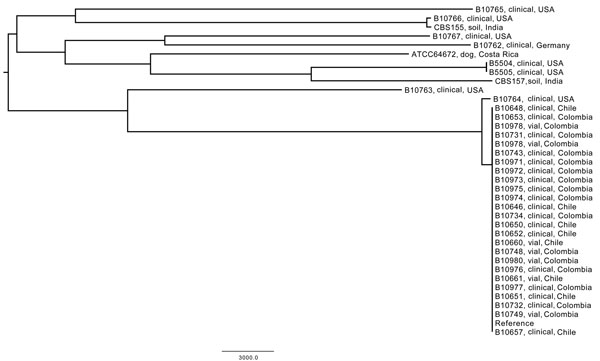Volume 22, Number 3—March 2016
Research
Whole-Genome Sequencing to Determine Origin of Multinational Outbreak of Sarocladium kiliense Bloodstream Infections
Figure

Figure. Whole-genome single-nucleotide polymorphism (SNP) typing of Sarocladium kiliense strains, Chile and Colombia, 2013–2014. All patient (clinical) and drug (vial) isolates from these 2 countries differed by <5 SNPs, and >21,000 SNPs were identified for the control isolates (≈117,000 total SNPs, ≈73,000 parsimoniously informative SNPs). Scale bar indicates nucleotide substitutions per site.
Page created: February 17, 2016
Page updated: February 17, 2016
Page reviewed: February 17, 2016
The conclusions, findings, and opinions expressed by authors contributing to this journal do not necessarily reflect the official position of the U.S. Department of Health and Human Services, the Public Health Service, the Centers for Disease Control and Prevention, or the authors' affiliated institutions. Use of trade names is for identification only and does not imply endorsement by any of the groups named above.